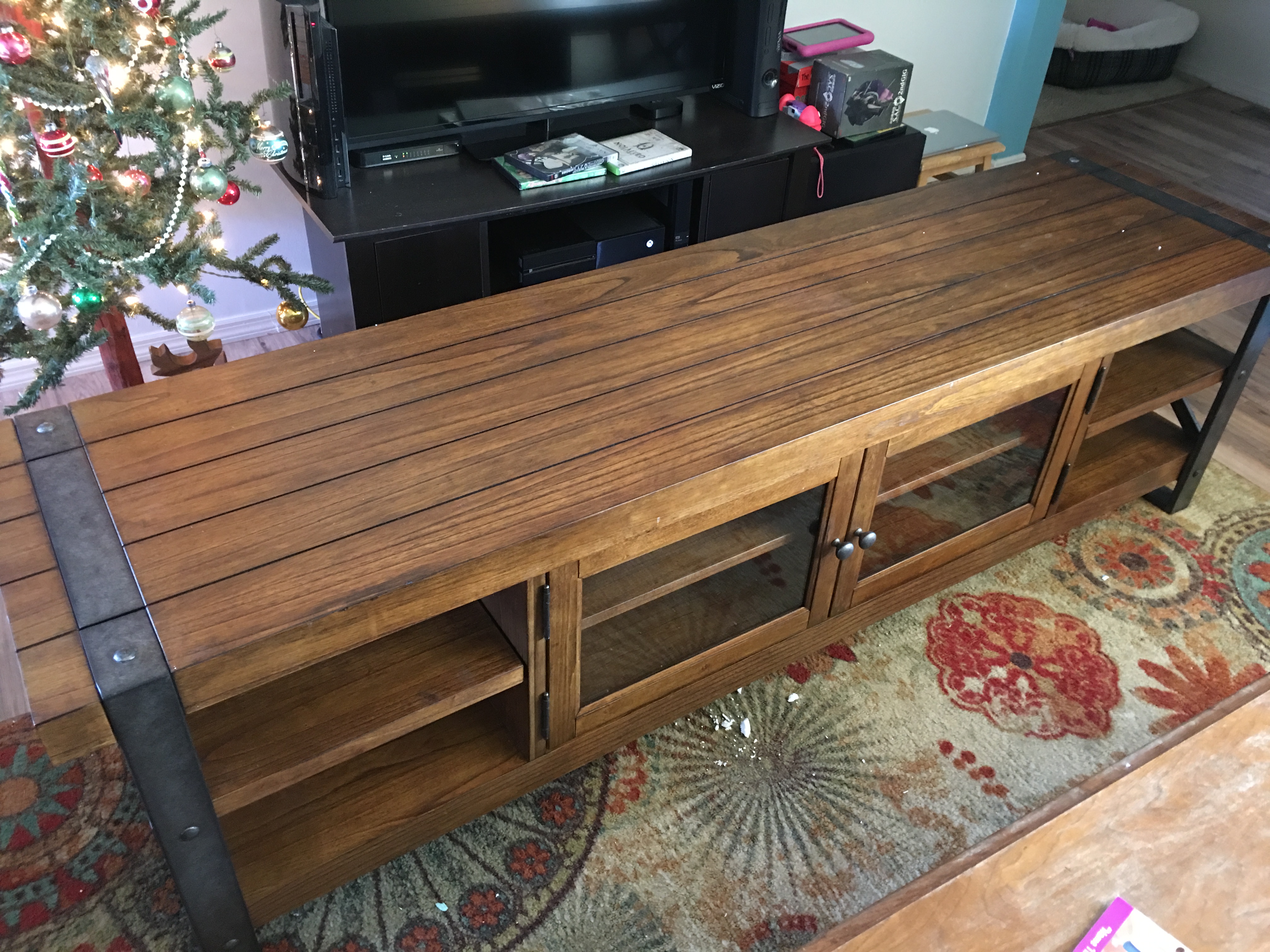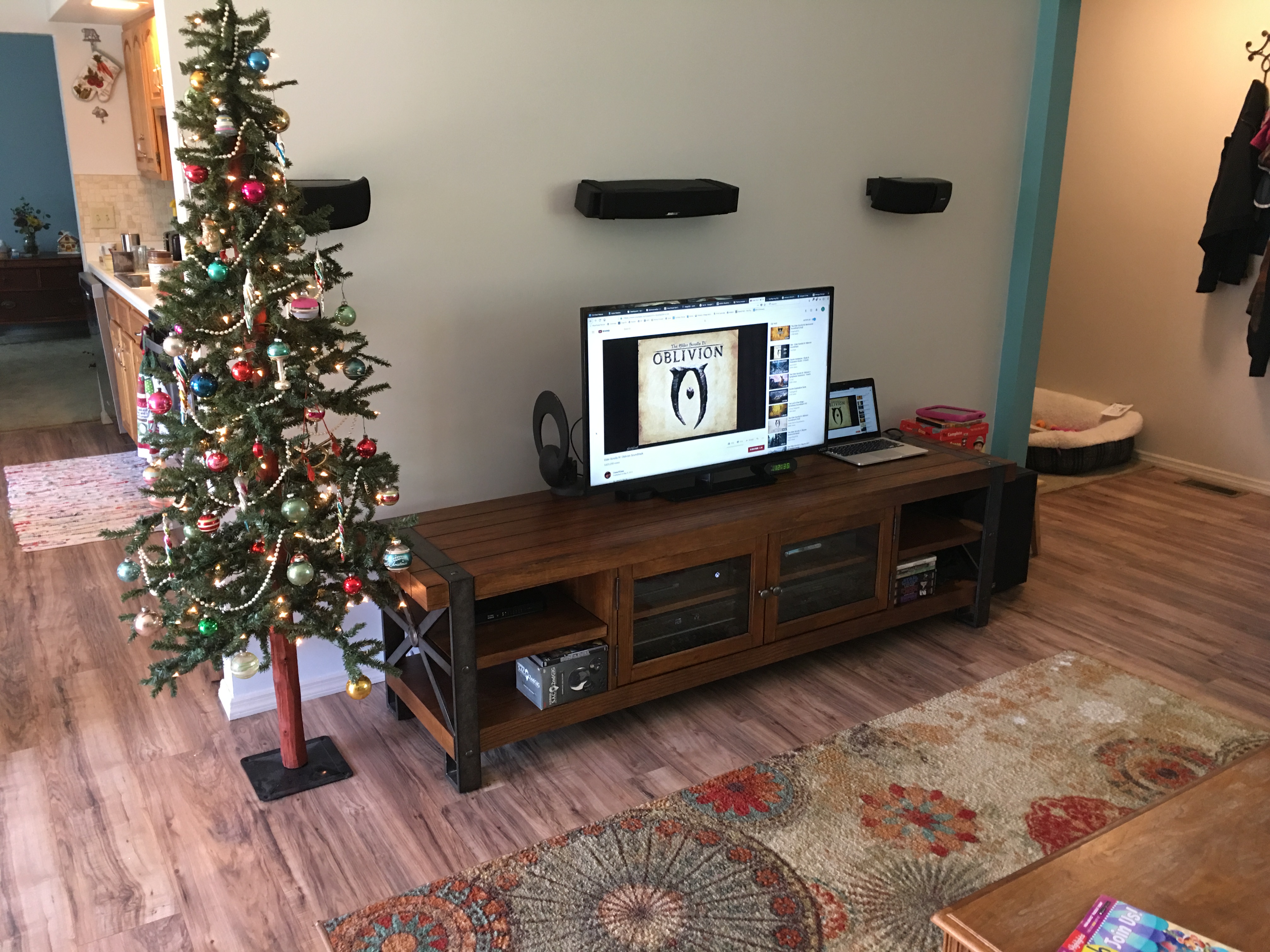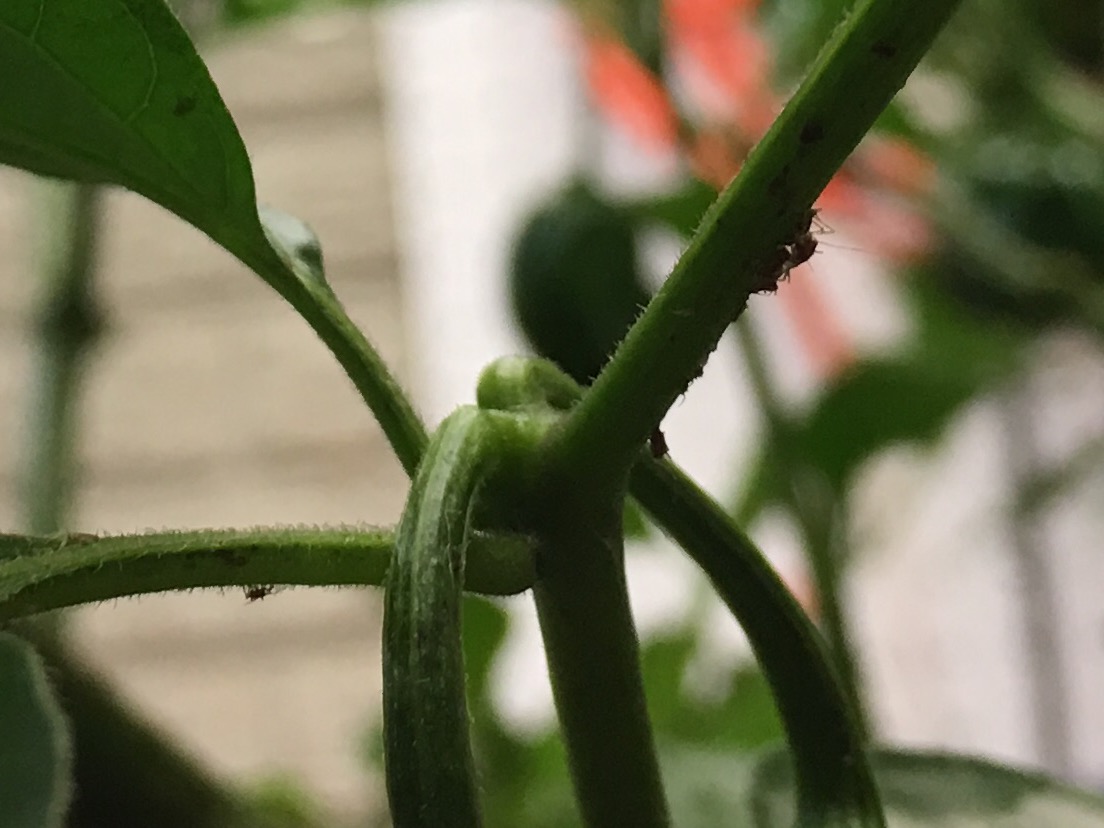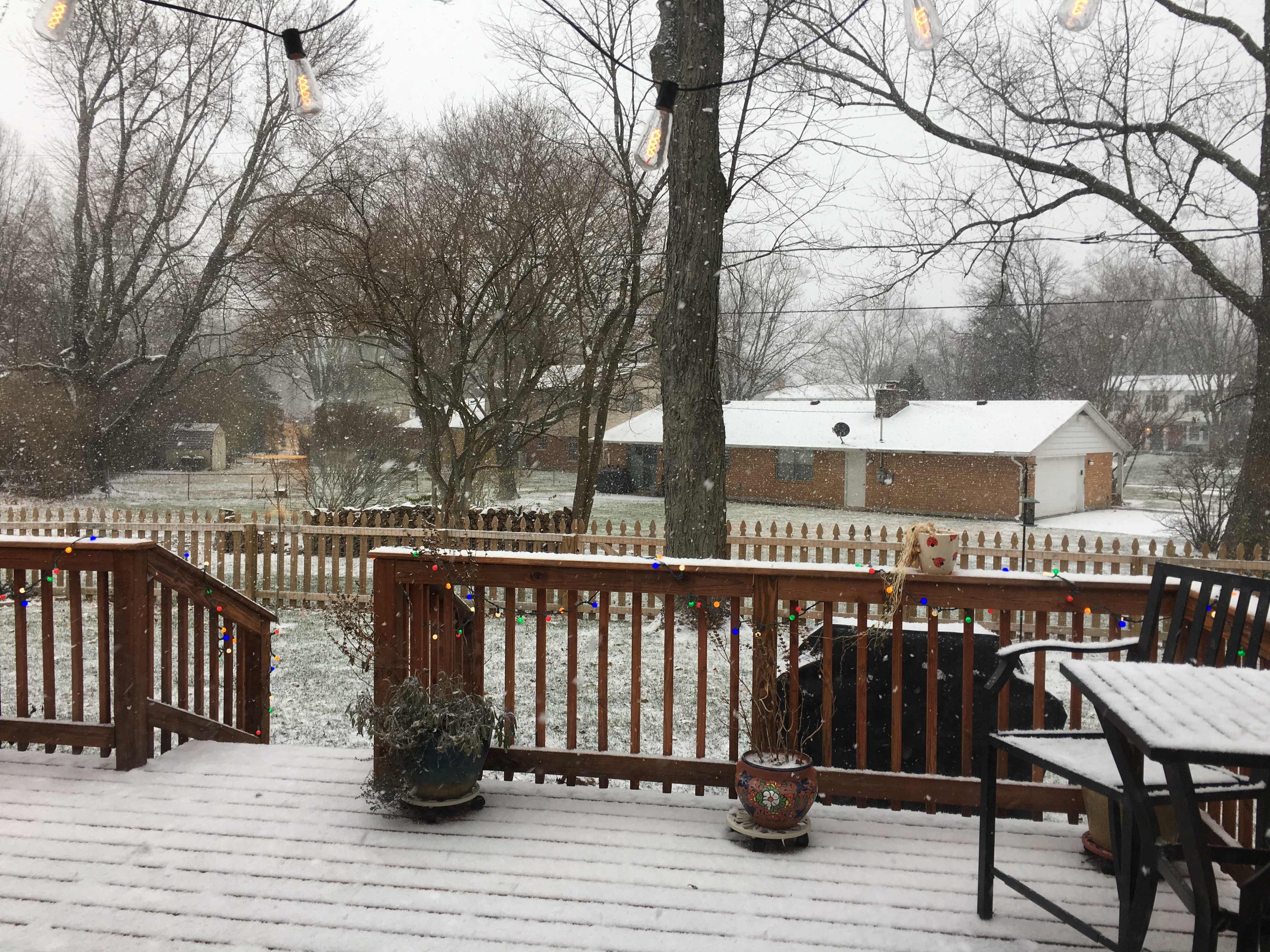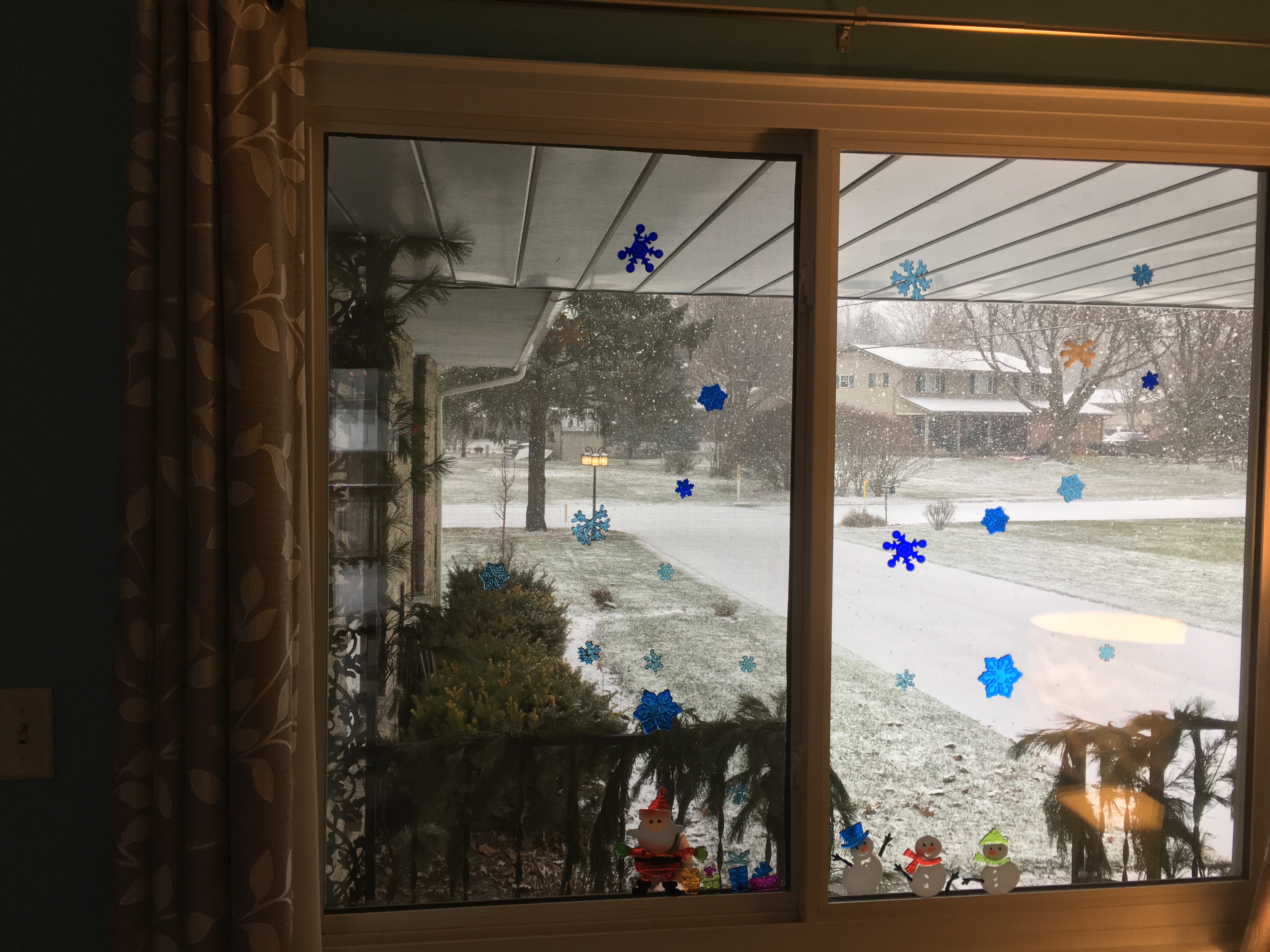The Christmas tree is up.
That statement carries heavy implications, to which family men everywhere shudder from mild PTSD.
Seriously, it’s a lot of effort for such a bizarre holiday decoration. In years past we had opted for an artificial tree, mostly because we lived in rented property, but also because I didn’t want to deal with the mess. That’s when we acquired would would be known thereafter as “The Martha Stewart Tree”, because we bought it at K-Mart (of all places that’s where Martha Stewart had her brand sold at the time), and it looked better than any artificial Christmas tree we had seen elsewhere.
But the tree came with very questionable pre-wiring (which I later removed), and the clipped wires of the tree’s frame were lethally sharp. And the damn thing dropped fake needles everywhere which the vacuum refused to pick up. Fuck that tree.
So we’ve since made the switch to real trees.
Of course, real trees have their own set of problems, but whatever kind we got this year has been especially awful. This one doesn’t have any real branches, just a bunch of fluff that can’t support any weight, so I only have half the lights on it that I would normally. And the sap gave me an allergic reaction.
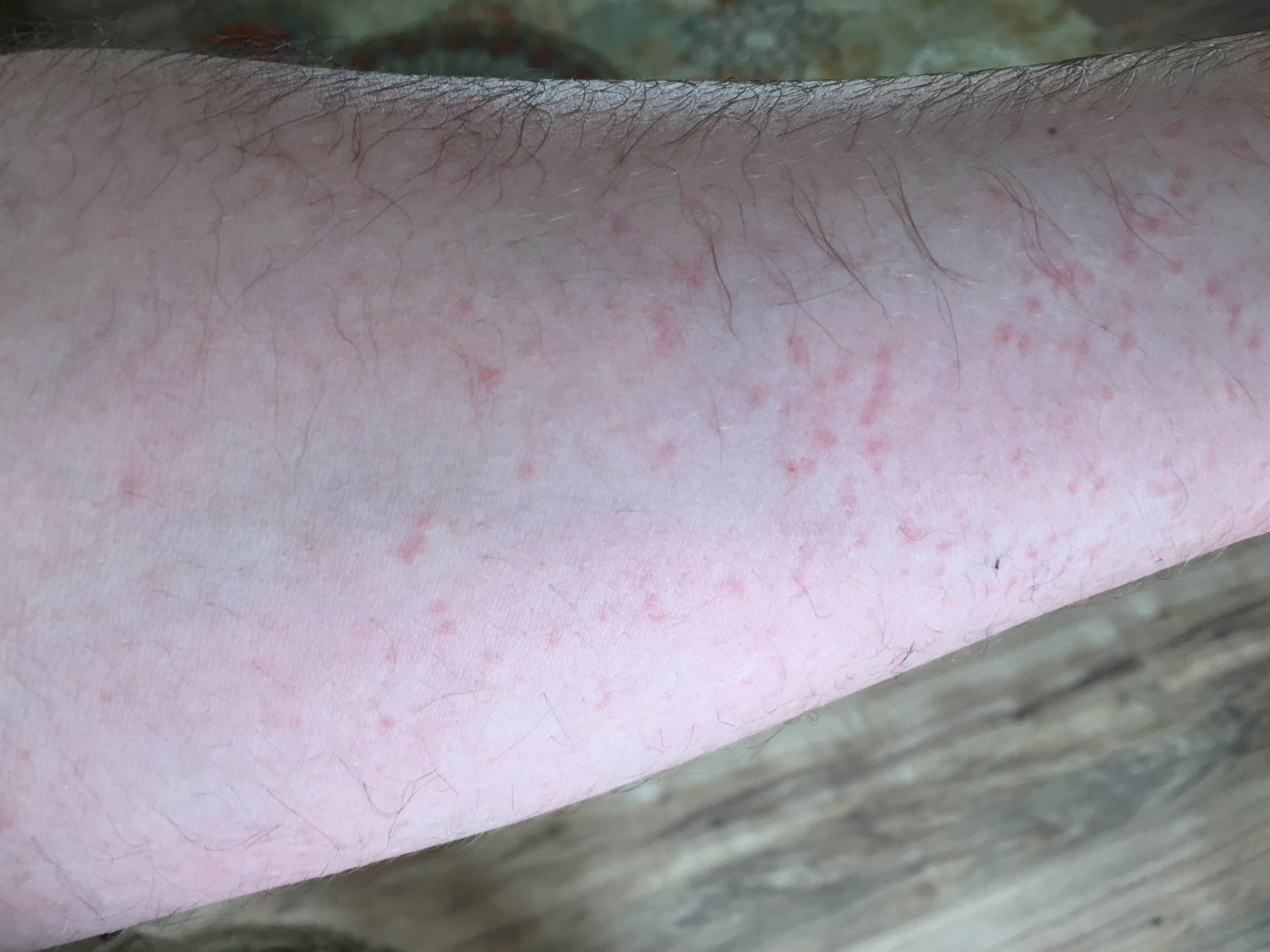
Plus, the ornaments keep falling off. Look at the kid’s consternation as she debates their placement:
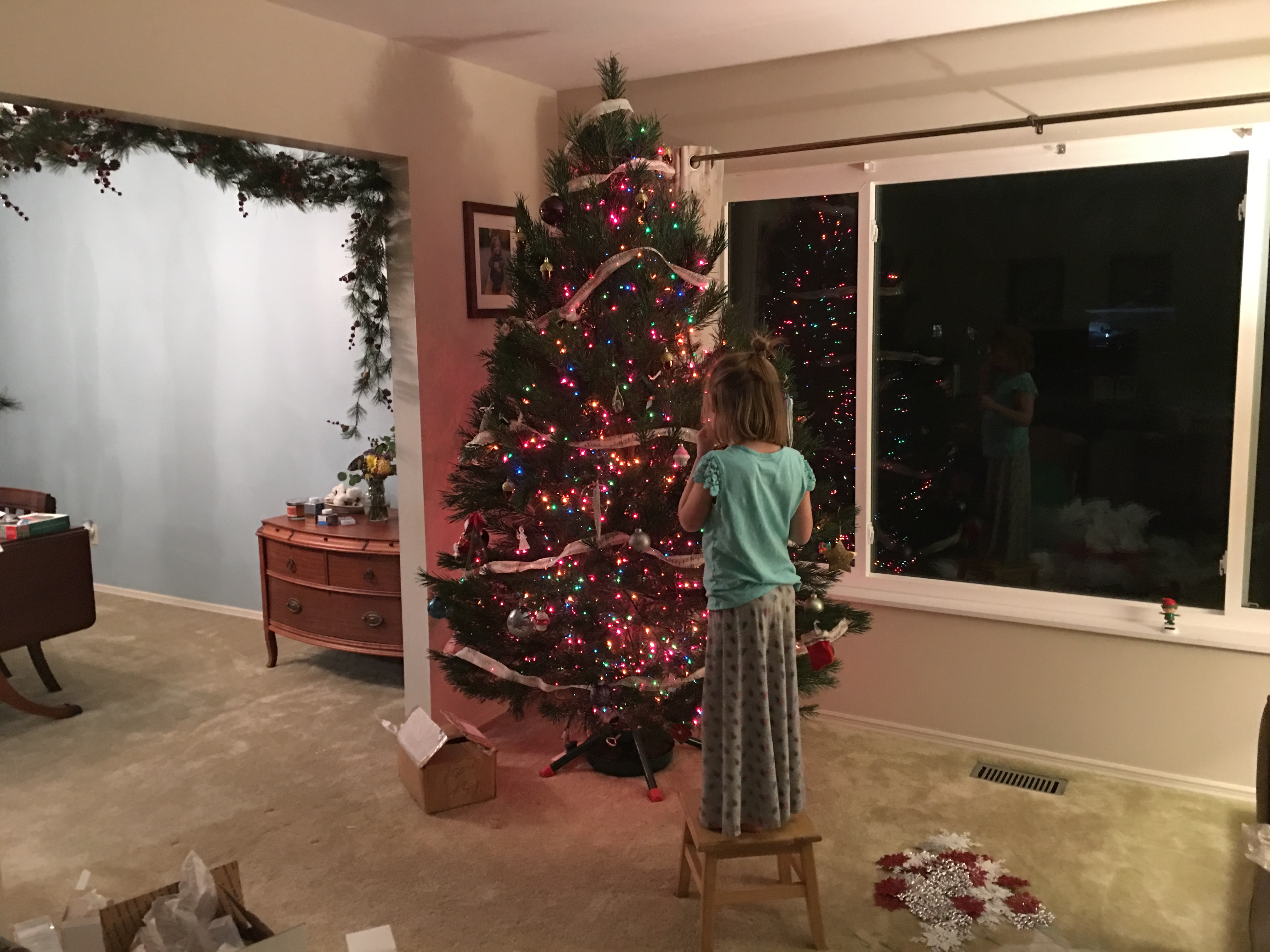
This was a terrible species for a Christmas tree. I sure hope Liz remembers what it was so we don’t get that kind again. I’m about to go Griswold on the neighbor’s spruce.
–Simon



